(1) F&SF COVER REVEAL. The Magazine of Fantasy & Science Fiction’s Jan/Feb 2020 cover art is by Max Bertolini.
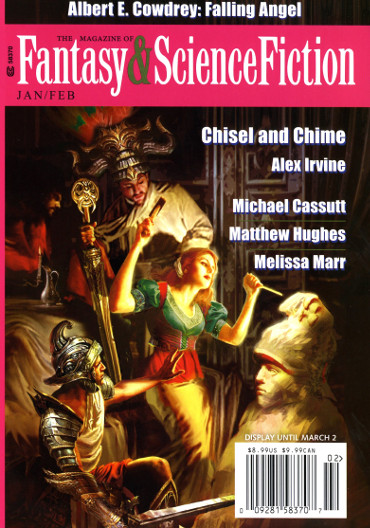
(2) RECOMMENDATIONS. Andrew Liptak shares his list of “10 new science fiction and fantasy books to check out this December” at Polygon. Following his first choice, Gideon the Ninth —
…The second is Cixin Liu’s Supernova Era. Liu is best-known for the epic novels The Three-Body Problem, The Dark Forest, and Death’s End, which put Chinese science fiction on the map for US readers. This novel, which sees Earth’s adult population wiped out after radiation from a supernova passes by, is about the young survivors as they work to rebuild human civilization once again. Like Liu’s other novels, it’s an ambitious, fun read that reminds me quite a bit of science fiction’s classic eras.
(3) A FELINE UNIVERSE. All you students of worldbuilding probably already know this: “An Attempt to Answer All Your Questions About the Plot and Universe of Cats“ at Vulture.
What the hell does “Jellicle” mean?
According to T.S. Eliot’s widow Valerie Eliot (at least as described in Lloyd Webber’s memoir), the word comes out of T.S.’s private joke about how the British upper class slurred the words “dear little cats” together to somehow make a sound like “Jellicle.” Eliot also wrote about “Pollicle Dogs,” based off the phrase “poor little dogs.” There’s a poem, “The Aweful Battle of the Pekes and the Pollicles” that gets ported into Cats, where the cats all dress up as dogs and make fun of them. This is frankly anti-dog, but what did you expect in Cats?
(4) NEW TESTAMENTS. “In the 2010s, The Handmaid’s Tale Arrived Margaret Atwood on whether anything shocks her anymore.” – The Vulture’s Molly Young interview with Atwood includes this passage about fan tributes.
What, if anything, did you make of that?
My readers deal with those things. They notice them before I do. I expect that Kylie Jenner heard from some of them along the lines of “We appreciate the thought, but you kind of missed it.” There were some themed tequila. People often do this in a very well-meaning way; they’re not trying to be unpleasant. It has been the occasion when I’ve been speaking somewhere and I will be greeted with Handmaid’s Tale cupcakes because the person doing the catering is such a fan. Will I turn up my nose at such cupcakes? No, I will not. I will not do that.Will you eat the cupcake?
That depends on my relationship to sugar at the moment. If I were in a sugar-eating moment, I would certainly eat the cupcake. I have a collection of artifacts: I have LEGO handmaids and commanders made by the children of one of the publicists in London. I’ve got some knitted chickens from a pro-choice outfit in Texas that knits chickens for charity. She made me some themed knitted chickens. First one is called “the Henmaid’s Tale.” It has an outfit. I have a piece of honey-point embroidery done before the embroiderer had read The Testaments or even knew about it. It says F*CK AUNT LYDIA So there are these things that appear, and as far as I’m concerned, that’s people playing in the sandbox. I’m happy to have people playing in the sandbox, although sometimes they get a little off, but that is to be expected. There are people right now writing military histories of Gilead, and I look forward to reading them because I’m not going to do that.
(5) NEW VANDERMEER. Arkady Martine for NPR concludes that “Clarity Isn’t The Point In Confusing, Absorbing ‘Dead Astronauts'”.
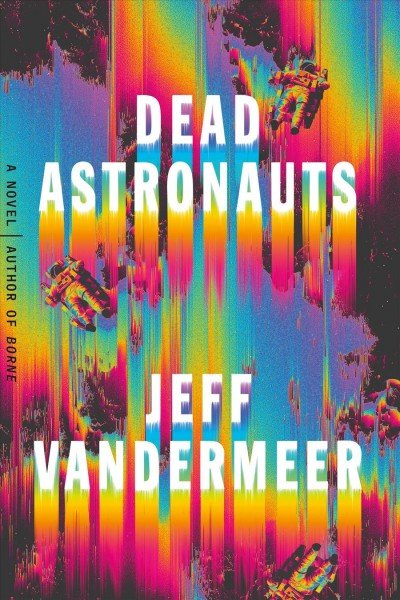
Jeff Vandermeer’s latest novel, Dead Astronauts, is a kaleidoscopic and fractured mosaic: In a long-changed, post-climate-apocalypse world, a trio of saboteurs — or escapees — or simply survivors — attempt over and over again to dismantle the work of the Company, an entity which may have once been a biotech corporation but now churns out broken and altered-beyond-recognition monstrosities in an endless stream. The three — who are the closest the reader gets to protagonists in the first half of the book — are only nominally human, and only nominally astronauts. Like nearly everything else Vandermeer has created in Dead Astronauts, they are allegories, figments, fables for a dissolving world where narrative and language are as subject to corruption as modified flesh.
Their leader is Grayson, an astronaut returned to Earth who can see futures and truths out of her blinded eye. With her are Chen, who sees the world in equations and probabilities, constantly on the verge of ego-dissolution into mathematics and emotional trauma; a man who might once have been a salamander, or many salamanders, but who definitely once worked intimately for the Company — and Moss, whom Grayson loves. Moss is sometimes a woman, sometimes a person — when she wants to be, for Grayson — and always a sentient moss, splittable into many selves, charged with (or choosing) to use herself to reseed the broken world with viable life.
(6) STARGIRL TEASER TRAILER. “The staff chose me, and I choose you.”
Stargirl premieres Spring 2020 on DC Universe and The CW. Stargirl follows high school sophomore Courtney Whitmore (Brec Bassinger), who inspires an unlikely group of young heroes to stop the villains of the past. The project reimagines Stargirl and the very first superhero team, the Justice Society of America, in a fun, exciting and unpredictable series
(7) STAY FROSTY. BBC’s Sounds devotes a segment of CrowdSicence to the question: “Could humans hibernate during interstellar travel?”
Science fiction is full of people settling on distant planets. But even the closest stars would take millennia to reach with current speeds of travel, by the time any passengers reached an extra solar planet, they would be long dead.
So CrowdScience listener Balaji asked us to find out whether humans could hibernate for interstellar travel?
To uncover the science fact behind this idea, Anand Jagatia holds a tiny hibernating dormouse at the Wildwood Trust in Kent, and meets Dr Samuel Tisherman who puts his patients into suspended animation for a couple of hours, to save their lives after traumatic injuries that cause cardiac arrest. We ask if Dr Tisherman’s research could be extended to put healthy individuals to sleep for much longer periods of time?
It’s a question that neuroscientist, Professor Kelly Drew is studying, in Alaska Fairbanks. She uses Ground Squirrels as a model to understand internal thermostats, and how hibernating mammals manage to reduce their core temperatures to -3 degrees Celsius.
Anand speculates wildly with science fiction authors Adrian Tchaikovsky and Temi Oh whose characters in their books ‘Children of Time’ and ‘Do You Dream of Terra Two?’ traverse enormous distances between habitable planets.
But is human stasis something that would actually be useful? John Bradford is the director of SpaceWorks, this company works with NASA to try to investigate human hibernation for space travel. He’s trying to make space-based human hibernation a reality, and it seems that may be closer than you’d think.
(8) DALEKS! Galactic Journey’s Jessica Holmes keeps her TV tuned to vintage Doctor Who — [December 7, 1964] Panic On The Streets Of London (Doctor Who: THE DALEK INVASION OF EARTH).
…Cue the montage! Daleks in Trafalgar Square! Daleks at the Albert Memorial! This is what location shooting is for. I don’t care if the rest of the series takes place in my shed, it’s worth it to see a Dalek surrounded by pigeons, further proving that Daleks are not the masters of Earth, because pigeons bow to no man, or alien pepperpot….
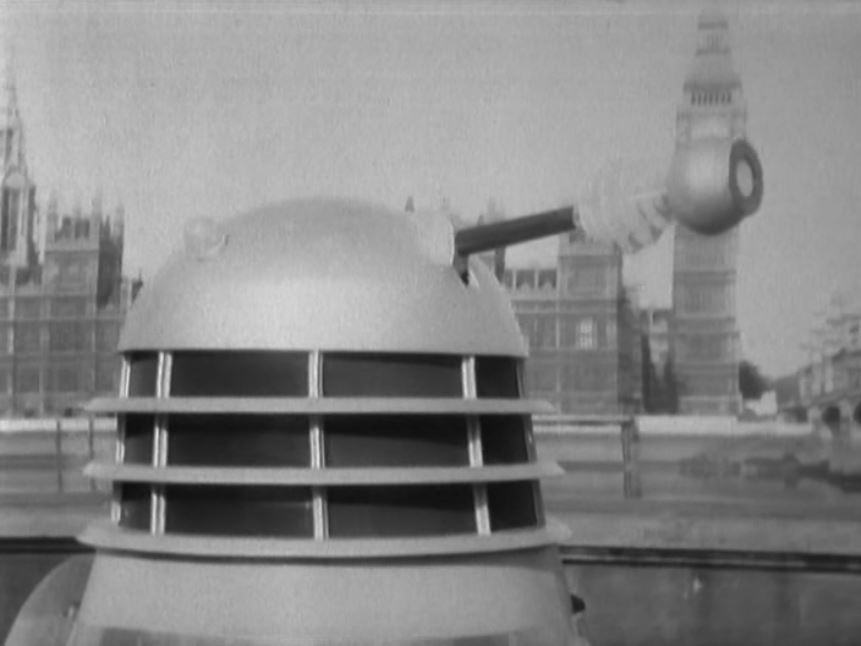
(9) FUTURE WHO. Meanwhile, in 2020…. Or it will be when this airs: “‘Doctor Who’ To Return With Biggest Episode Ever As Showrunner Chris Chibnall Shakes Up Sci-Fi Show” – Deadline has the story.
Doctor Who showrunner Chris Chibnall… told Deadline that Jodie Whittaker’s Tardis-travelling time lord will be thrown into action in a “movie-like” two-part curtain-raiser called Spyfall, which will premiere on BBC One and BBC America on January 1, 2020.
“Episode one is probably the biggest episode of Doctor Who we’ve done, or has been done, I would imagine. Physically, there’s a lot of stunts, there’s a lot of locations, it’s a globe-trotting action thriller,” he said. “But you don’t want to lose sight of character and intimacy and emotion. You can’t do everything at 11.”
(10) TODAY IN HISTORY.
- December 7, 1979 — Star Trek: The Motion Picture premiered. Starring all of the expected suspects plus the now departed Indian model and actress Persis Khambatta, the film did very well but not well enough to not stop the studio from stripping Roddenberry of creative control of all things Trek. Reviewers and critics alike give it a 42% rating at Rotten Tomatoes.
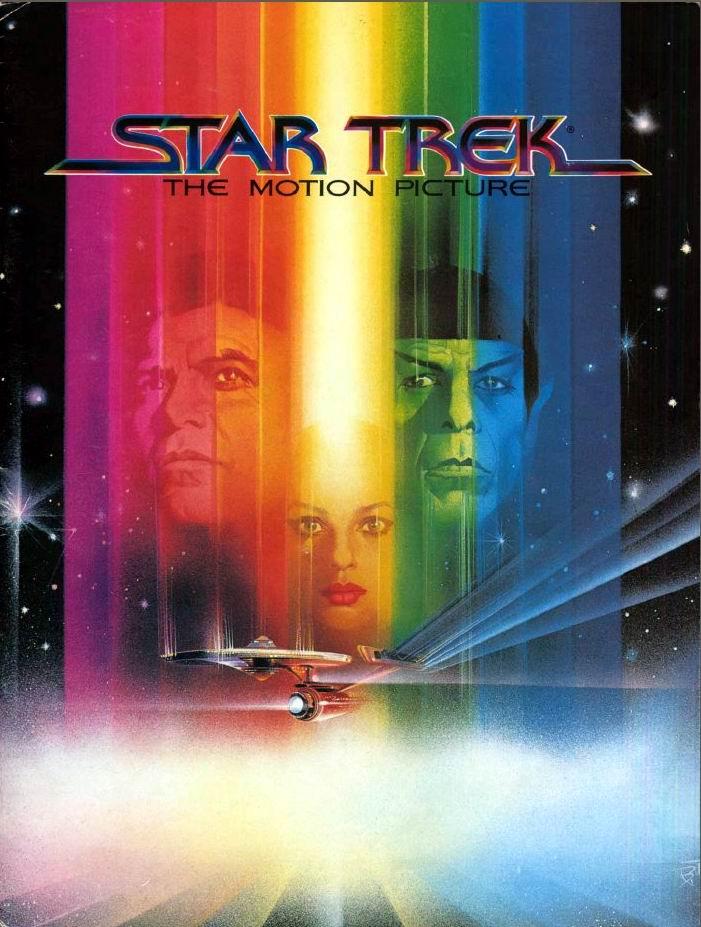
- December 7, 1984 — 2019: After The Fall of New York premiered. This Italian film was directed by Sergio Martino in both the English and Italian versions. The film starred Michael Sopkiw and Anna Kanakis, and George Eastman. Wiki says it was influenced by Escape from New York. One critic noted that “Graphic scenes of rape and murder await the viewer, as well as rats, midgets, and subway-riding revolutionaries.” Despite that, or because of it, it has a decent 59% rating among viewers at Rotten Tomatoes.
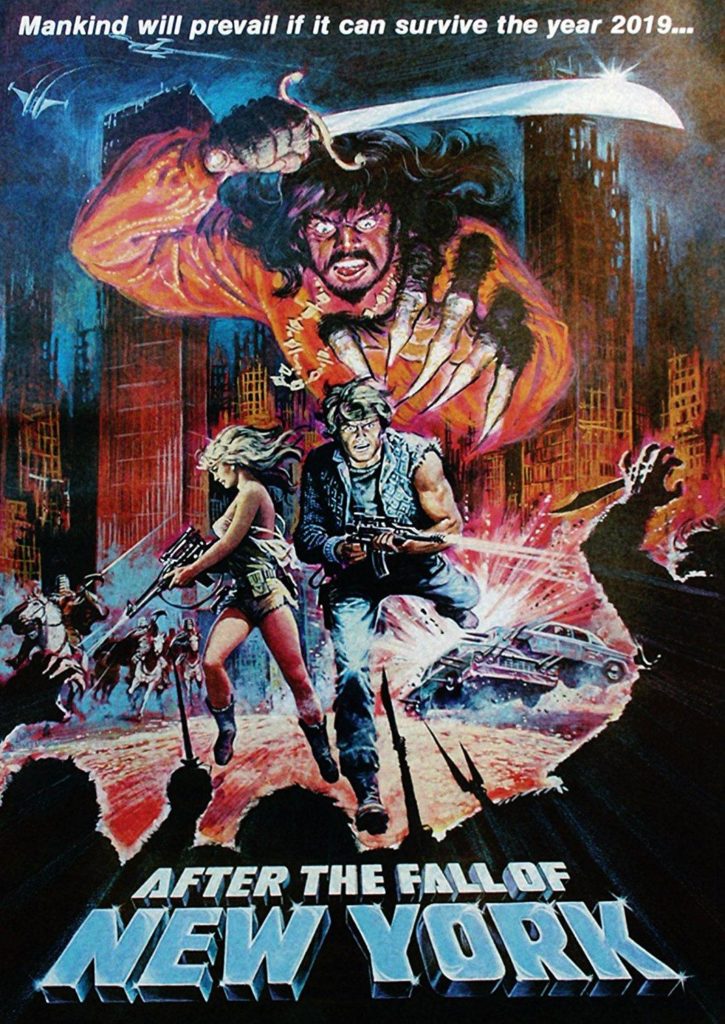
- December 7, 1984 — 2010: The Year We Make Contact premiered. Written, produced, shot and directed by Peter Hyams. It’s based off Clarke’s 2010: Odyssey Two, the sequel to the film. It starred Roy Scheider as Heywood Floyd, John Lithgow as Walter Curnow and Helen Mirren as Tanya Kirbuk. It would outgross both Dune and Starman who opened roughly when it did. And yes it won the Hugo Award for Best Dramatic Presentation at Aussiecon Two beating out The Last Starfighter, Dune, Ghostbusters and The Search for Spock.
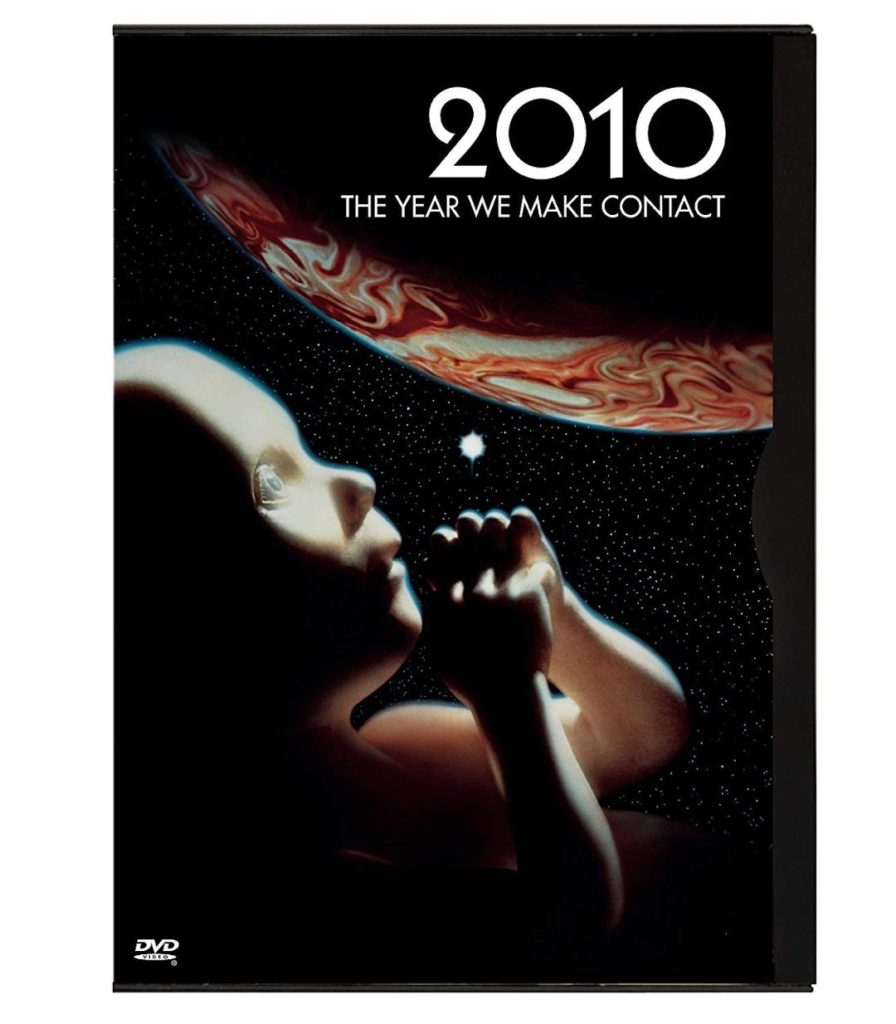
(11) TODAY’S BIRTHDAYS.
[Compiled by Cat Eldridge.]
- Born December 7, 1915 — Eli Wallach. I‘ve a fondness for anyone who appeared on the Sixties Batman series. He played Mr. Freeze in a two part story, the third actor to do as both George Sanders and Otto Preminger had done so in previous two part stories. He also had one-offs in Worlds Beyond, Alfred Hitchcock Presents, Veritas: The Quest and Tales of the Unexpected. (Died 2014.)
- Born December 7, 1923 — Johnny Duncan. Was the Sixties Batman the first Batman series? You know better. Johnny here was Robin on Batman And Robin (1949) for Columbia Pictures Corporation. It ran for fifteen episodes with roughly fifteen or so minutes apiece. Robert Lowery was Wayne / Batman. He has only one other genre appearance, an uncredited one in Plan 9 from Outer Space as Second Stretcher Bearer. (Died 2016.)
- Born December 7, 1915 — Leigh Brackett. Surely her scripts for The Big Sleep and The Long Goodbye are genre adjacent? Why not? Ok, then her very pulpy Sea-Kings of Mars is? Being rhetorical there. And I love her Eric John Stark stories! (Much of these were written with her husband Edmond Hamilton.) And yes, she completed her draft of The Empire Strikes Back just before she died. (Died 1978.)
- Born December 7, 1945 — W.D. Richter, 74. As a screenwriter, he’s given us Invasion of The Body Snatchers, Dracula, and one of my most loved films, Big Trouble In Little China. As a director, he gave us Buckaroo Banzai Across The 8th Dimension, another of my most loved films. He’s not getting love for the reboot of Big Trouble In Little China with Dwayne Johnson that he’s apparently involved with. Grrrr!
- Born December 7, 1947 — Wendy Padbury, 72. She’s Zoe Heriot, a Companion to the Second Doctor. She first appears in “The Wheel in Space” where she is the librarian on board the Wheel. Big Finish has made use of her character rather well. Her only genre film was Cathy Vespers in The Blood on Satan’s Claw (not to my to-be-viewed list), and she was regular cast member Sue Wheeler in the Freewheelers series which at least genre adjacent. Think Avengers only younger.
- Born December 7, 1949 — Tom Waits, 70. He’s got uncredited (but obviously known) roles in Wolfen and The Fisher King. He is in Bram Stoker’s Dracula as R.M. Renfield, and he shows up in Mystery Men as Doc Heller and in Mr.Nick in The Imaginarium of Doctor Parnassus. He’s simply Engineer in The Book of Eli.
- Born December 7, 1959 — William John King, 60. Author who works exclusively in the Warhammer and Warhammer 40,000 Universes. Now I’ve not read in that universe, but I discovered recently, well in the last few months I think, that Games Workshop actually has some forty shops around the US where you can buy their miniatures, get them painted and just hang out. They also sell some fiction, both hardcopy and audiobooks, all Warhammer of course. Neat?
(12) COMICS SECTION.
- Bliss shows there’s no end of things alien visitors must keep in mind.
- Frank and Ernest think that, a synonym for wimpy, “snowflakes” is an illogical choice.
(13) THE ORIGINALS. Profiles in History will hold an auction of rare original comicbook art on December 12, “Comic & Illustration Art the Property of a Distinguished American Collector”. The entire catalogue is viewable online, or as a download.
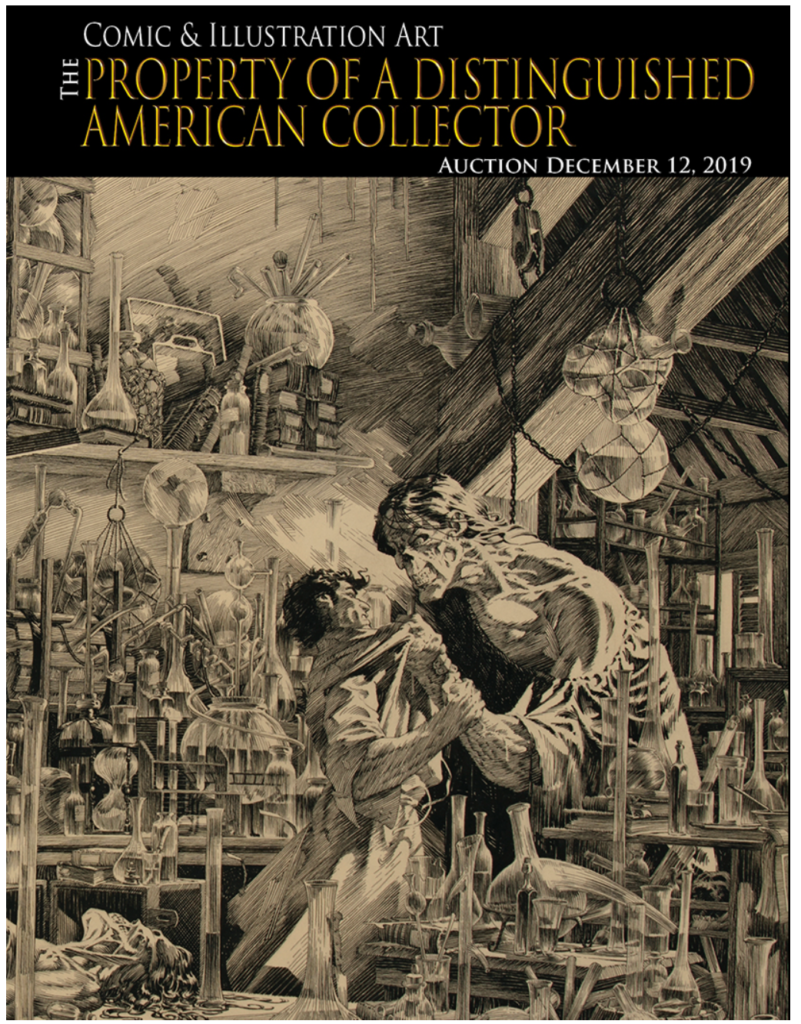
(14) BIG BROTHER WASN’T WATCHING? Daring Fireball carries the phone maker’s response to news linked in yesterday’s Scroll: “Ultra Wideband Technology: Apple’s Explanation for Why Newer iPhones Appear to Collect Location Data, Even When Location Services Are Disabled”…
…Nick Heer:
“This makes complete sense to me and appears to be nothing more than a mistake in not providing a toggle specifically for UWB. It seems that a risk of marketing a company as uniquely privacy-friendly is that any slip-up is magnified a hundredfold and treated as evidence that every tech company is basically the same.”
It is totally fair to hold Apple to a higher standard on privacy than other companies. But Heer is exactly right: when they do make a mistake, it’s going to be magnified. The mistake here wasn’t that location data was leaked?—?including to Apple’s own servers, apparently. The mistake was not making it clear in Settings that UWB requires location data for regulatory compliance. Most people don’t even know what UWB is at this point.
(15) SOME RANDO. Tor.com’s Andrew Liptak in “Ryan Reynolds Discovers He’s an NPC in the First Trailer for Free Guy“ explains it more clearly than the studio’s synopsis, so let’s go with Liptak. He begins —
Non-player characters (NPCs) are a staple of video games: the anonymous members of a crowd that make up the background of the story you’re playing. At São Paulo’s Comic Con Experience (CCXP) today, 20th Century Fox unveiled a first look at Free Guy, about such a character who realizes that the world he inhabits isn’t what it seems.
(16) LOVE AMONG THE PENGUINS. I was never allowed to see Bruce Pelz’ chart of the romantic entanglements of LASFS members, but I bet it looked something like this… “Japan’s aquarium penguins lead complicated lives of feuding, love — and incest”. CNN has the complete chart posted here.
…Such is the intrigue surrounding the sex lives of these black and white birds that, for the second year running, Kyoto Aquarium and Tokyo’s Sumida Aquarium, have released a chart detailing the tangled love lines among them.
…Rozu (or Rose) was a pick-up artist and a penguinizer before meeting Warabi, formerly the most popular penguin in the aquarium.
After falling in love, the two are now in an exclusive relationship and “can’t bear to leave each other’s side for more than one second.”
Then there’s inter-species love.
The two Penguin Relationship Charts also reveal how the aquariums’ caretakers are unwittingly pulled into the penguins’ affairs of the heart.
Caretaker Nagaoka’s friendship with penguin Hanabi has made Hanabi’s wife Ichigo jealous, turning Nagaoka and Ichigo into enemies.
Chiyouchin is said to have “neverending love” for his caretaker Oshiro.
Caretaker Tanaka wants to befriend Kiriko, but Kiriko blows hot and cold — sometimes sulking with Tanaka for as long as 20 minutes.

(17) CONSENTACLE. “Consentacle is a board game about having consensual alien sex in space “ – let SYFY Wire’s “Fangrrls” explain:
… While we at SYFY FANGRRLS don’t often talk about board games, we thought we would make an exception for this one, because it’s about playing through a consensual female-focused alien encounter with some sexy tentacles, and if that’s not our area of expertise, I don’t know what is.
Consentacle is a co-operative board game set in space, where the whole aim is for players to communicate as best they can with a language barrier in place. One player takes on the role of a curious blue-haired human astronaut, while the other takes on the role of a sensitive and caring feminine tentacle-covered alien. Neither of your species shares a spoken language, and as such the players are not allowed to use words to communicate their plans during the game. Both players and characters establish consent, then attempt to fumble their way wordlessly through a sexy space encounter, keeping each other’s needs and wants in mind.
Different acts between the pair will produce different “satisfaction” resource tokens, and the players have to work out what each other needs, and try to anticipate their plays, for mutual resource building in tandem. Each player has their own deck of cards, which have various effects when used solo or in combos, with some cards better used one-sided or in tandem….
[Thanks to Gordon Van Gelder, John Coxonn, JJ, Cat Eldridge, Mike Kennedy, John King Tarpinian, Andrew Liptak, Chip Hitchcock, Daniel Dern, Martin Morse Wooster, and Andrew Porter for some of these stories. Title credit goes to File 770 contributing editor of the day Fire Chief Daniel Dern.]
Discover more from File 770
Subscribe to get the latest posts to your email.

Re: Stephen Gould. I haven’t read everything he’s written, but I enjoyed Wildside and 7th Sigma. I don’t recall anything problematic about either of them, and they both have YA/teen protagonists.
For 12yo, my own recommendations from top of my head would be (apart from above mentioned):
Jacqueline Carey – Santa Olivia (her other books are not YA, not even the sequel)
Holly Black – Curse Worker series.(or any of her other YA books)
TS White – The Once and Future King
Graceling – Kristin Cashore
Richard Adams – Watership Down
Naruto, the Manga comic book by Masashi Kishimoto
Stay Still, Stay Silent – Webcomic, available in book form
Spill Zone – Comic by Scott Westerfeld
I will not recommend any of Heinlein’s juveniles. I reread a few of them some years ago and they had aged kind of badly. They felt old and out of touch.
And I’ll repeat the Dark Is Rising recommendation twenty times over.
As an alternative to Salem’s Lot, there’s always Nancy A Collins Sunglasses After Dark which mixes vampires with urban fantasy in a good way. But I find myself having to be careful with my recommendations, as I had my horror period during that time and was devouring all vampire books I could find (it was easier then).
No one had mentioned William Sleator yet, have they? Interstellar Pig, Green Futures of Tycho, House of Stairs, Boy Who Reversed Himself are possibilities.
I don’t think I’ve seen A Wizard Of Earthsea mentioned yet.
And congrats and best wishes for the adoption!
@Chip
For Cherryh, I’d say “Merchanter’s Luck” and “Cuckoo’s Egg” might be closer to YA. Maybe “The Paladin”; it does have some sex and violence, but it’s not graphic. The Chanur books, maybe.
John Hertz responds by carrier pigeon:
Why do belters wear red suspenders?
They used to be blue, but they shifted.
Greg, I second Goblin Emperor and Diana Wynne Jones. I especially liked Jones’s “Howl’s Moving Castle” trio – the outer books have female point of view characters and the middle male, but there are plenty of male and female characters in all of them. I can’t remember any non-binary characters, but they were written a while ago. The point of view character in the middle book is from a Middle Eastern or North African style country, though in the latter part of the book the action moves to the European style country the first book is set in. We do get to see the mental comments of the protagonist at the odd flavors and customs, which is cool. The third book is my favorite, maybe because of the dog, or the book-reading and food-loving personality of the protagonist. I really identified with her! The set is available as a single e-book.
I also would recommend a lot of Patricia Wrede’s books, with the Enchanted Forest Chronicles being the most obvious. Of those four books, the first and third (as now published – the fourth book was actually written first) have female point of view characters, and the second and fourth male. The set is available as a single e-book.
Good luck to you and Eric and your prospective son!
@Hampus
Would you still feel that way about them if you were 12 years old, reading them for the first time, without the broad-based background in SF you have now?
I still pick up some of his juvies from time to time, and my response is nothing like it was 40-45 years ago, when I was 12 to 17. I can see faults that went right by me the first time. But that doesn’t mean that the best of them (Citizen of the Galaxy, Tunnel in the Sky, Have Spacesuit — Will Travel, Farmer in the Sky) are bad books for the intended audience.
@bill: I would tend to agree with Hampus that they are not good books for the intended audience. I remember a 1960’s Time cover on “The American Teenager” which led with the observation that “If Booth Tarkington wrote Seventeen today, he’d have to call it Twelve; the changes in the audience in the last half-century are much more wide-reaching — starting with the unacceptably dismissive attitude toward girls and women that runs through most of the juveniles. Even Tunnel in the Sky is a problem — the first question a modern reader would have is “Why does Jacky pretend to be a boy?”
bill:
Most likely, yes. There are a lot of things that are just old fashioned. Enormous high technology teleportation devices between planets – and people ride through them on ox charts. Gigantic spaceships, steered by looking up numbers in giant log books. And so on.
Then the attitudes that might have seemed progressive then, showing capable young girls, that now are damaged by the main character constantly being surprised that girls can think and actually do things.
They are old-fashioned in the same way as Jules Verne where they travel to space by hiding in a hollow canon ball shot by a giant canon. Fun as a curiosity, but not really the best starting point. There are newer books on the same themes that will most likely fit better.
@Hampus
I can play devil’s advocate with that, though. 🙂
That predicts a future with tremendous inequality, in which the government finds it easier to export the poor population rather than try to improve their standard of living. The tech mix itself isn’t a surprise: we saw men on horseback in Afghanistan using laser pointers to direct airstrikes.
This simply depicts a future that’s not as progressive as we’d like to see. What’s really hard to believe is a future society that’s exactly the same as ours except for a few bits of technology.
Okay, you’ve got me on this one. The biggest holes (I claim) in older SF are a) no computers b) no cell phones c) no Wikipedia. People are constantly struggling to do a computation, and the plot often hinges on people being unable to get in contact with each other and/or no one being able to easily find the answer to some bit of public information. Even Neuromancer suffers from this.
“Brake,” by Poul Anderson, was an SF short story I really loved as a kid, but when I reread it as a man, I realized it was written before dish antennas were developed. He assumed that a space ship en route from Earth to Jupiter would be out of communication for most of the way because it couldn’t get enough power to an omnidirectional antenna. Maybe it could be fixed by having the bad guys sabotage the antenna at some point . . .
This simply depicts a future that’s not as progressive as we’d like to see.
No, that depicts a future that has gone backwards from the present day, with no explanation like Anderson’s interregnum between the Polesotechnic League and the Empire. This sexism isn’t shown as a property of societies that have never abandoned old ways; it is presented as characteristic of the apex powers.
Greg Hullender:
From my perspective, that sentence by itself means “I know I don’t really have any good arguments, but I can twist words to pretend I do.” 😉
@Hampus
Actually it just means “I’m going to argue the other side, just for fun, but don’t assume I really believe this.”
https://youtu.be/ohDB5gbtaEQ
😀
@ bill. Would you still feel that way about them if you were 12 years old, reading them for the first time, without the broad-based background in SF you have now?
I’ve tried Heinlein on twelve year olds recently and the reaction wasn’t positive. They weren’t able to articulate the reasons for their dislike so I don’t know if it was the style of writing or sexism or something else. I will note that ‘Foundation’ and ‘Lord of the Rings’ were also rejected. The only non-modern books that got a positive reaction were Agatha Christie’s.
Belated, but I want to mention a strong anti-recommendation of a good book. Steven Gould’s Jumper is age appropriate, despite that “A lot of grown ups who read to page 9 and stopped try to ban this book” (That is Gould’s own description. It’s the moment the teenage male protagonist almost gets gang-raped, and it is neither representative of the book nor repeated).
I would argue its first sequel, Reflex, is a very good very adult book, as not only are the two protagonists married adults, but the male protagonist goes through extensive, and quite grim, brainwashing, ie, torture. I would not give it to a teen unread and unvetted, and probably not at all to a 12 year old.
It’s my understanding that the books that spin off the movie are more YA, but I haven’t read them. (The movie changed the plotline nearly past recognition, but apparently the novelization and books recapture some of the spirit of scientific experimentation)
Hmm. My c key on this keyboard is requiring some extra effort to garner a response. Not a good sign.
If a person who is in charge of a library for junior high students makes the decision that a particular book is not appropriate for them, and either declines to add it to the collection, or removes it from the collection, that’s not “banning” a book. That is exercising the authority and discretion that comes with the job.
Jumper is a hard case. It is well written and a cracking good story. It has one scene that I don’t think is appropriate for my 12 year old son, or most of his classmates that I have met. If I were in charge of his school’s library, it would not be in the collection. OTOH, I would recommend it (with discussion) to high school kids on a one-to-one basis.
@Greg
Dunno when he wrote it, but it was published in 1957. Dish antennas go back to WW2. Anderson just messed up, is all.
@bill
Do you have a particle of evidence that the people Lenora Rose is mentioning were all librarians? IME, librarians are much less likely to remove books than … outsiders. It is also unclear to me that such barring is (or should be) within a librarian’s discretion; I would hope that someone feeling the need to block a book would at least consult.
The problem with older science fiction like the Heinlein juveniles or Andre Norton’s for that matter is that both the technology and the social attitudes very dated, even if the books were actually progressive for their time, as many of Heinlein’s and Norton’s were.
When I read Citizen of the Galaxy and Starman Jones as a teen thirty years ago, I enjoyed them, but the dated technology such as rocketship navigation via logarithmic tables was already very notable back then. If anything, authors like Heinlein and Asimov who delved deeper into the technological and scientific aspects are more dated today than someone like Andre Norton who primarily focussed on adventure.
That doesn’t mean that you cannot give those books to young readers. And the basic “outcast orphan finds friends/mentors and makes a good life for themselves” plot of many of the Heinlein and Norton juveniles would likely appeal to foster and adoptive kids. However, I would add a caveat along the lines of “This book is a lot of fun, but it’s also pretty old and some things may seem a bit strange.” I also would reread it before handing it to a kid, just to check that the suck fairy hasn’t added racism, sexism and homophobia in the meantime.
I was reading decades old children’s and YA books as a kid and had no problems, but then I always knew that those were older books and that some things were just different. Years later I learned that many of those books had been edited to remove politically problematic content and in one case to change the setting of a series from East Prussia (which was German when the books were written, but is part of Poland and Russia nowadays) to Lower Saxony, which explained why so much about the setting of the books seemed off to me as a kid.
Oddly enough, a popular German fantasy novel for young readers, “Rennefarre: Dott’s Wonderful Travels and Adventures” by Tamara Ramsay, stuck with its East German setting, even though those places were literally a foreign country, when I read the book as a kid.
“Rennefarre: Dott’s Wonderful Travels and Adventures” has a recentish English translation BTW and is a lovely book, though it’s a) old, b) has a female protagonist and c) is set in a foreign country (but one that’s easier to visit now than it was when I read it). Lovely landscape descriptions, though.
Talking of classic German children’s fantasy, “Krabat and the Sorcerer’s Mill” by Otfried Preussler would also be a great choice for a twelve-year-old. It’s a historical fantasy novel about a teen boy in the 17th century who becomes one of the apprentices to a sorcerer and quickly realises that this particular sorcerer practices and teaches dark magic. There is an English translation by the great Anthea Bell available. And because it’s historical fantasy, it has aged better than other books from the same period. The culture is foreign, but it’s foreign for most Germans, too, the Sorbs being a slavic minority in East Germany. It is a tad grim, though. There is an English language summary here.
Finally, Cornelia Funke’s YA fantasies are also great for young teens and have been translated into English in the wake of the Harry Potter boom. A lot of them have male protagonists, too.
@Lenora Rose
Not if the age is 12 (as Greg Hullender’s prospective son is). I reread it last night and this evening. Davy, the main character, starts as 17, and is an adult (over 18) most of the book. In addition to the attempted rape of a minor, there are major themes of alcoholism and spousal abuse (of two different women). Davy’s father is a mean drunk and beat him, and his mother abandoned him. Davy has an adult sexual relationship with his girlfriend. And there are two scenes of fairly graphic violence (a terrorist literally blows up Davy’s mother, and another terrorist is blown up by a grenade; Davy picks the pieces out of a pool of water). There are multiple uses of the f-word. If the book were faithfully adapted to film (not like the existing movie Jumper), it would unquestionably be a strong R-rated movie.
@Chip Hitchcock
The quote is actually from Gould, and is out of context. Further, I can’t find the original, to place it into context. I couldn’t find any details about any specific case where someone challenged this book, or attempted to ban it. The ALA said that Jumper was one of the 100 most-banned books during the decade of the 1990s, but none of their reports I could find give details. They only list and rank books, and give gross statistics.
So, to answer your question, I don’t have any evidence about the banning of Jumper. Which is why I made my statement not about Jumper, but about challenges to books at the junior high level in general.
Those are not that unusual themes in Swedish YA-books. They tend to tackle more dark elements. On the other hand, we have a problem with getting them published in other countries…
@bill–
And then went on to demonstrate an apparently complete ignorance of how books get on to the ALA’s “100 most-banned books” lists and of how librarians do collection development, not to mention how books get challenged in school and public libraries.
Librarians have policies for their libraries setting out what the library is collecting, and why. I ran a research library for a biotech R&D company for nearly a decade, and the only books in that library not directly related to what the company was doing were a few management & motivational books specifically requested by admin, and some techie titles requested by IT. The only book that people looked at and said “why is this here?” was a baseball book that was apparently in the motivational category. When the VP that requested retired, it wasn’t pulled just because the new VP would never have requested it.
In school and public libraries, the collection policies are a lot broader. You want everyone who’ll be using the library to find things to read, to the extent allowed by the funds available. In a school library, the books have to be mostly age-appropriate. What guides the selection of books not on the curriculum, though, is not “cannot possibly offend some kid’s conservative religious parent.” There are vocabulary age guides, but they’re guides, not laws. And–many adolescents are in fact struggling with serious issues that some of their parents would prefer they not read about. This is the age at which kids are starting to discover sex. Kids start to explore sex. They’re starting to have strong feelings they may not understand. They may get involved in unhealthy relationships. They may be targeted for abuse by older teens or by adults around them. Or they may have friends experiencing these things, and be trying to understand.
From age 12 on up, yes, a book like Jumper may be exactly what a particular kid needs–even if their parents think it’s inappropriate, or find it disturbing.
The parents have a right to veto their own kid being assigned a particular book. They have no business demanding it be removed from the curriculum or from recommended reading lists. They have absolutely no business demanding it be removed from the library. This is of course where, in school libraries, librarians’ professional standards can collide with the political realities of the schools, whether public or private. The librarians will often lose. In public libraries, the librarians’ professional standards have a far higher probability of prevailing.
What gets a book onto the banned book lists are serious attempts to remove a book and deny access to it based on the censorious impulses of non-librarians, not librarians making collection development decisions in the ordinary course of their jobs.
Given the issues with “Jumper,” we think it would probably be best to hold off on that one for a couple of years, but we really appreciate everyone putting so much effort into the discussion of it.
We’ve got a really great list of books to suggest now, so thanks again everyone!
Technically, it was a Gould paraphrase. We were talking abotu the book a good decade ago or more (A couple of times. It got brought up at Viable Paradise because it had just been optioned, and got brought up on VP alumni discussion lists and I think at Making Light.)
I agree entirely that a school librarian choosing not to acquire a book is not banning. But how you leapt to the idea that that was what I or Gould meant by it, I don’t know. I mentioned libraries not at all, and school libraries by definition even less so. He was talking about those “Banned books” lists, plus a variety of nasty letters and other anecdotal evidence that comes to an authors whose books get banned. (And how is appearing on a 100 most banned books in the 1990s not evidence there were attempts to ban the books? Did you think libraries drew the names out of a hat?)
12 was the age my library (NOT my school library) allowed kids to take out books from the adult section. I tried some books I most definitely did not fully get: Joan D. Vinge and Janet Morris leap to mind, but even Anne McCaffrey has some things that should make you hesitate. At 14 I read about Vanyel getting actually gang raped. Come to think of it, at 10 I was reading about entire warrens getting gassed and euthanized from the POV of the rabbits it was happening to. And at least a couple of Jane Yolen’s Holocaust related books and stories are closer to middle grade than YA.
YMMV. Jumper is probably a book Greg Hullender can decide whether to offer his kid-to-be, now or later. If the kid came from an abusive home, it might be reassuring to see someone who comes from such a place and puts a life back together on his own terms. Or maybe the kid isn’t ready to think about such topics for a while and wants something safer. We don’t know the child in question, we don’t know the parenting choices to make. I’d probably be trying Rick Riordan (or any of the Rick Riordan Presents books by other authors) and Susan Cooper and Diana Wynne Jones and even the Goblin Emperor first.
And Greg posts while I was typing.